The violet is one of the first flowers to appear at the very beginning of spring. It then forms a lovely little tapetum, made up of small heart-shaped leaves and colourful flowers, often mauve, in the shade of trees and woodlands. Among the different varieties, the sweet violet offers a delightful fragrance, reminiscent of the purple sweets of our childhood. Edible, it is also frequently used in baking for its gourmet scent and to make violet syrup. Easy to make, discover our recipe for a delicious violet syrup.
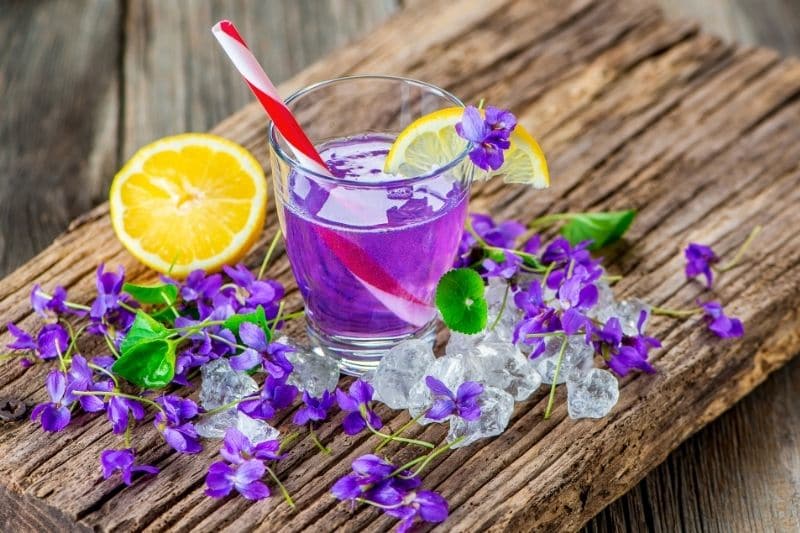
Violet syrup is highly appreciated for its freshness in summer
When, how and where to harvest sweet violets?
When to harvest?
Violets are among the first flowers to bloom at the end of winter. They flower from March to April depending on the region, and it is during this spring period that you can go foraging.
How to harvest violets?
To make violet syrup, you will only need to harvest the flowers. These can simply be picked by hand. Choose a sunny day, preferably in late morning when the dew has evaporated, but before the sun warms the air too much.
Do not confuse violets with pansies, as although both flowers are edible, their fragrances are different. The violet has two petals pointing upwards and three petals pointing downwards, while pansies have four petals pointing upwards and one large petal pointing downwards. Moreover, the sweet violet emits an unmistakable, strong violet fragrance, like the famous sweets.
Note that violet leaves can also be harvested all year round, to be enjoyed in salads or to enhance a mesclun mix.
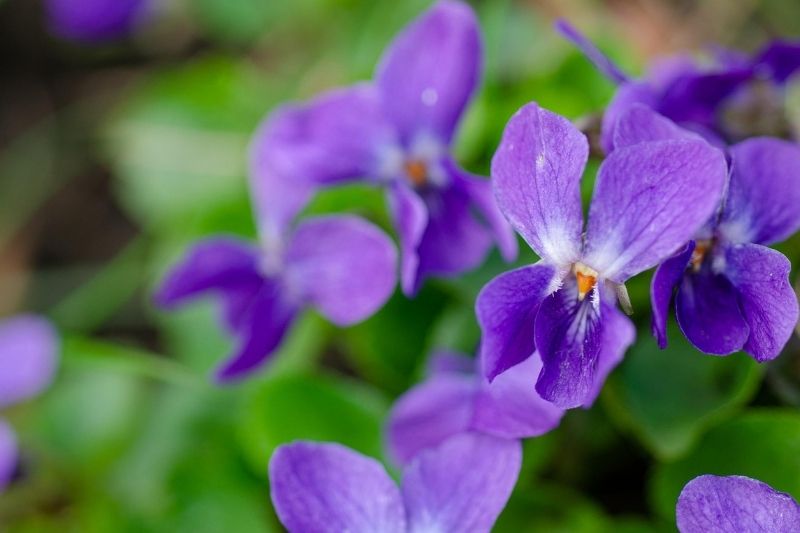
The flowers of the sweet violet (viola odorata)
Which variety of violet to choose?
To make violet syrup, you will need to select violets of the "odorata" genus. The viola odorata, typical of European woodlands, is mainly used. Generally speaking, viola is an excellent ground cover plant for shady, even dry, situations. It even grows at the foot of trees, where other perennials fail to establish themselves. It spreads simply by its stolons and also self-seeds spontaneously. Here are a few examples to plant in your garden:
- The Viola odorata is the true European violet, the one that grows naturally in woodlands. Its small blue-purple flowers emit a delightful violet fragrance. It is perfect for making the famous syrup.
- The Viola odorata 'Königin Charlotte' is an old fragrant variety, with light violet flowers, slightly bluish. Its woodland violet fragrance is ideal for making syrup.
- The Viola odorata 'vanilla' stands out for the original colour of its vanilla-yellow flowers. Delicately scented, it is mainly used in baking to decorate cakes.
- The Viola odorata 'Plena' is distinguished by its double flowers, blue-mauve in colour and maculate with white at the base. Its pronounced, slightly green and sweet fragrance is perfect for baking.
- The Viola odorata 'Alba' is a white-flowered variety mainly used in baking, where it beautifully decorates cakes.
→ Discover all our violet varieties.
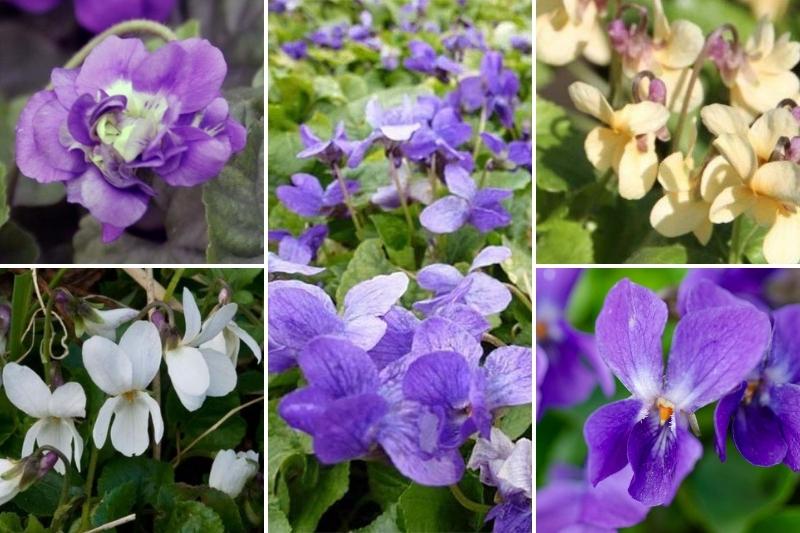
The Viola odorata 'Plena', Viola odorata 'Alba', Viola odorata 'Königin Charlotte', Viola odorata 'vanilla' and the traditional Viola odorata of woodlands
The violet syrup recipe
Ingredients:
To make 10 cl of violet syrup, you will need:
- 50 sweet violet flowers from the garden.
- 150 g of white sugar to achieve a beautiful mauve colour.
- 15 cl of water
- Facultative: half an organic lemon or 5cl of lemon juice for better preservation
Recipe:
- 1/ Rinse your violet flowers gently with cold water.
- 2/ Place the flowers in a large bowl or jam jar, then crush the petals with a fork or pestle.
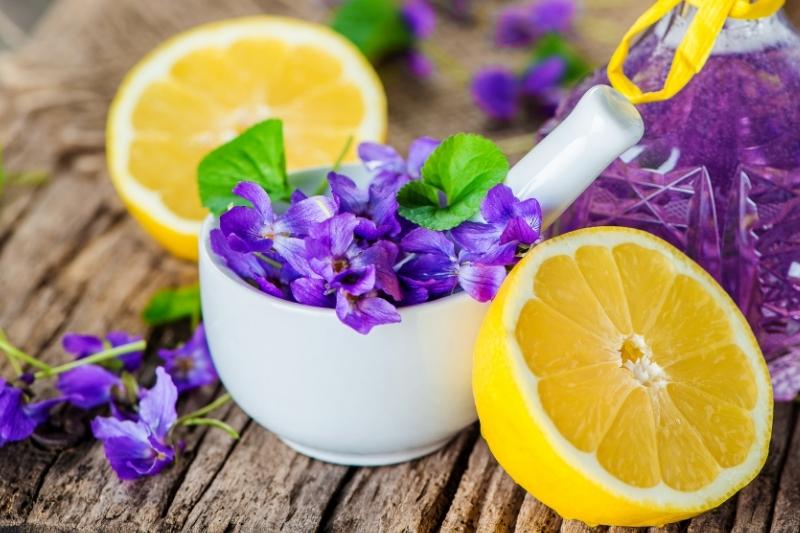
Crush the violet flowers to extract the aromas
- 3/ Add the half lemon sliced into rounds or the pressed juice.
- 4/ In a saucepan, bring the water to the boil, then pour it immediately over the flowers. Seal the jar with its lid or with cling film. Leave the mixture to infuse at room temperature for 12 hours.
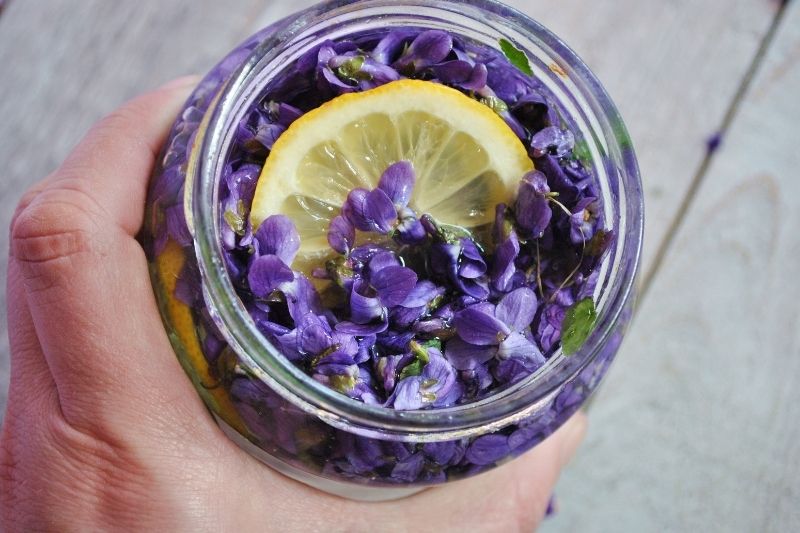
Place the flowers, water and lemon in a jar for 12 hours of maceration
- 5/ Once the time has elapsed, place a saucepan on the heat. Using a sieve or a clean cloth, filter the contents of your jar to keep only the juice in your saucepan. Press the petals and lemon slices well to extract all the liquid.
- 6/ Then add the white sugar and cook over low heat for 7 to 8 minutes, stirring frequently with a wooden spoon. The sugar should be completely dissolved.
- 7/ Pour your syrup immediately into a previously sterilised jar or bottle. Seal the container and place it in a cool place or in the refrigerator.
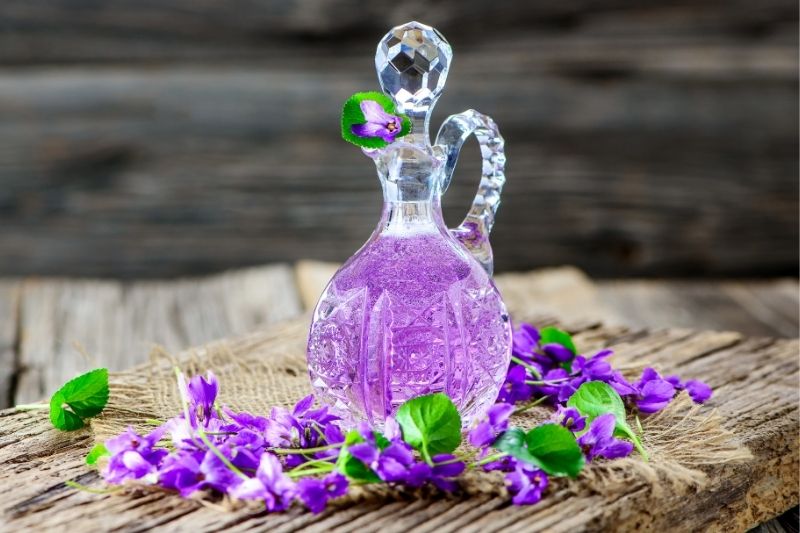
A pretty little transparent bottle to admire the beautiful colour of violet syrup
My tips:
- Preferably use white sugar to achieve a beautiful lilac-pink colour. Brown sugar, muscovado sugar, coconut sugar and other "coloured" sugars unfortunately alter the beautiful violet colour of the syrup.
- Adding lemon juice gives a rather lilac-pink hue to your syrup but ensures better preservation.
Recipe ideas:
Violet syrup can be served simply with still or sparkling water and a few ice cubes for a refreshing drink. This syrup can also be used to prepare original kirs or to flavour yoghurts, cakes and desserts.
To go further:
- Discover all our Viola varieties.


































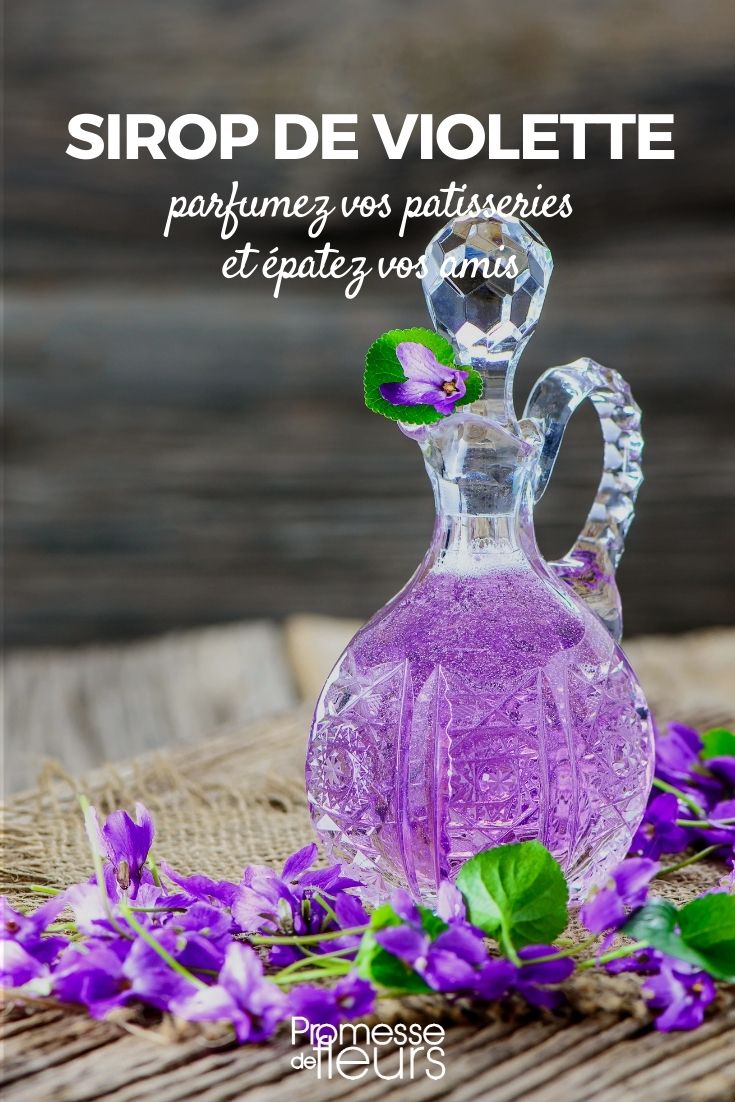
Comments